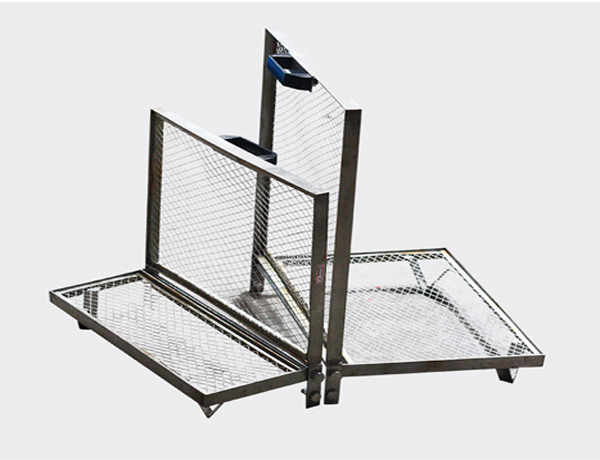What is the seat flammability test?
Ⅰ. History of Seat Flammability Testing
Following several fatalities caused by post-crash fires in the 1970s, the Federal Aviation Administration (FAA) established the Special Aviation Fire and Explosion Prevention (SAFER) Advisory Committee in 1978. The SAFER Committee was directed to "examine factors that affect the survivability of aircraft cabin occupants in the post-crash environment." The committee provided findings and recommendations on a number of different issues, one of which was the development of fire barriers for seat cushions as a means of slowing the spread of flames.
Aircraft seat cushions constitute a significant fuel source in the event of a fire. Although these materials already pass vertical Bunsen burner tests, the large amount of foam in full-scale cabin fires causes flames to spread rapidly and produces significant amounts of smoke and flammable gases. The FAA began researching potential fire protection concepts. One phase of this research program developed a test for evaluating and certifying seat cushions using a 2-gallon-per-hour kerosene burner. This burner is currently used to test hose assemblies, pipes, and similar components.
Following this study, the FAA issued Notice of Proposed Rulemaking (NPRM) No. 83-14. establishing additional flammability requirements for seat cushions used in transport category aircraft. This was enacted into federal law a year later, in 1984. when the final rule was issued. This final rule established new flammability requirements for aircraft seat cushions on transport category airplanes and rotorcraft. 14 CFR 25.853 was amended to add paragraph (c), and 14 CFR 29.853 was amended to add paragraph (b). Both paragraphs required seat cushions to meet the requirements added to the newly formed 14 CFR 25. Appendix F, Part II.
Ⅱ. Why Conduct Flammability Testing on Seats?
The core purpose of seat flammability testing is to comprehensively ensure safety in fire scenarios and meet regulatory and practical application requirements. First, by simulating open flames or high-temperature environments, testing accurately assesses the burning rate and flame spread of seat materials, as well as the amount of smoke and toxic gas concentrations generated during combustion. This ensures that the seat will not rapidly fuel combustion or release excessive amounts of hazardous substances in a fire, buying critical time for evacuation and initial firefighting, while also reducing the risk of asphyxiation or poisoning from inhalation of toxic gases. Second, test results directly correlate to product compliance with international and regional safety standards (such as EU EN 1021. US FMVSS 302. and China GB 8410). These standards have clear requirements for metrics like burning rate and flame duration. Passing these tests can lead to authoritative certifications (such as UL and CE), enhancing product market compliance and competitiveness. Furthermore, test data can provide manufacturers with a basis for material optimization, promoting the selection of fibers or coatings with improved flame retardancy, and guiding improvements to seat structural design to mitigate fire hazards at the source. Ultimately, these efforts have reduced the scale and casualty risk of fires caused by flammable seating in public places (such as transportation, theaters, and offices), protecting lives while minimizing property damage and social impact.
Ⅲ. Working Principle
A specimen is mounted on a specially designed test rack. An ignition source is applied to a specific location on the specimen for a specified period of time. The combustion behavior is then observed and the relevant data recorded. By measuring and analyzing this data, the combustion performance of upholstered furniture can be evaluated.
Ⅳ. Key Steps in the Standard Test Procedure
Horizontal Burning Test: A horizontal specimen holder is configured according to ASTM D635. A propane torch is used to apply a flame height of (38 ± 2) mm, and the specimen's combustion behavior under a specific radiant intensity is recorded.
Vertical Burning Test: The specimen is held vertically according to the 94 V rating standard. Two flame exposures are applied with a 10-second interval. The ignition of absorbent cotton by a molten droplet is measured.
Cone Calorimetry: A realistic fire scenario is simulated using the radiant power specified in ISO 5660-1 (25-75 kW/m²). Peak heat release rate and total heat release data are simultaneously collected.
Smoke Density Chamber Test: A closed optical system is constructed based on ASTM E662. The maximum specific optical density (Smmax) is calculated from changes in laser transmittance.
Gas Chromatography-Mass Spectrometry Analysis: Combustion products are collected for qualitative and quantitative analysis, with a focus on monitoring the concentrations of toxic volatile compounds such as benzene and halogenated hydrocarbons.
Ⅴ. Operational Procedures
Turn on the power to ensure the tester is operating normally.
Adjust the gas pressure and flow to ensure a stable ignition source.
Turn on the gas flow switch and adjust the flame size to the required standard.
Mount the specimen onto a specially designed specimen holder and hang it vertically in the tester.
Press the start button and aim the ignition source at the object to test its ignition resistance.
When the timer expires and an alarm sounds, press the reset button to end the test.
Ⅵ. Seat Flammability Tester Features
Stainless Steel Combustion Chamber: Provides a stable and safe combustion environment that meets standard requirements.
Ignition Source: Typically includes a lit cigarette, butane burner, or wood block ignition source, simulating various ignition sources.
Measurement System: Includes heat release rate measurement, gas analysis, and smoke transmittance measurement for comprehensive combustion performance evaluation.
Control System: Typically computer-controlled for easy data recording and analysis.
Ⅶ. Maintenance and Care
Maintenance and care of the combustion tester are crucial for its proper operation and longevity. The following are some key areas to note:
1. Cleaning and Care: Regularly clean the exterior and interior components of the tester, including the combustion chamber, thermocouples, and gas lines. Keep the equipment clean to prevent dust and debris from affecting test results.
2. Check the Power and Gas Source: Ensure the power and gas supply to the tester is functioning properly, and regularly check the power cord and gas lines for integrity. If damaged or aged, replace them promptly.
3. Check the Thermocouple: The thermocouple is a critical component of the tester, used to measure temperature. Regularly check the thermocouple connection for tightness, looseness, or damage. If any abnormality is detected, replace it promptly.
4. Check the Gas Supply: Ensure the gas supply to the tester is stable, and the flow and pressure meet the requirements. Regularly check the gas pipeline for leaks and repair any leaks promptly.
5. Check the Combustion Chamber: The combustion chamber is the core component of the tester, used to simulate the sample combustion process. Regularly check the interior of the combustion chamber for cleanliness and the presence of carbon deposits or debris. Clean it if necessary.
6. Check the Control System: The control system of the combustion tester is critical to ensuring test accuracy. Regularly check the control system's circuit boards, sensors, and other components for proper operation and damage. If any abnormality is detected, repair or replace it promptly.
7. Regular Calibration: To ensure accurate test results, it is recommended to calibrate the tester regularly. Calibration should be performed according to the manufacturer's calibration procedures to ensure accuracy.
8. Records and Maintenance Logs: Create and maintain a maintenance log for the tester, recording each maintenance and inspection. This helps track the equipment's maintenance history and identify potential problems promptly.
Through these maintenance and care measures, you can ensure the proper operation of the combustion tester, improve the accuracy of test results, and extend the equipment's lifespan.
Ⅷ. Precautions
Before using the tester, carefully read the manual to ensure correct operation.
Perform regular maintenance and servicing on the tester to ensure proper operation.
Pay attention to safety during testing to avoid accidents.
In summary, the upholstered furniture flammability tester is an important tool for evaluating the flammability of upholstered furniture and is crucial for ensuring the safe use of furniture.
Fire performance testing of seats is a crucial component of ensuring safety in public spaces. Through systematic testing, high-precision instruments, and standardized methods, the fire performance of seat materials can be scientifically evaluated. During product development, companies should strictly adhere to relevant standards for testing and optimize material formulations and structural designs based on test results to comprehensively improve the fire safety rating of seats and meet regulatory requirements and market demand.


